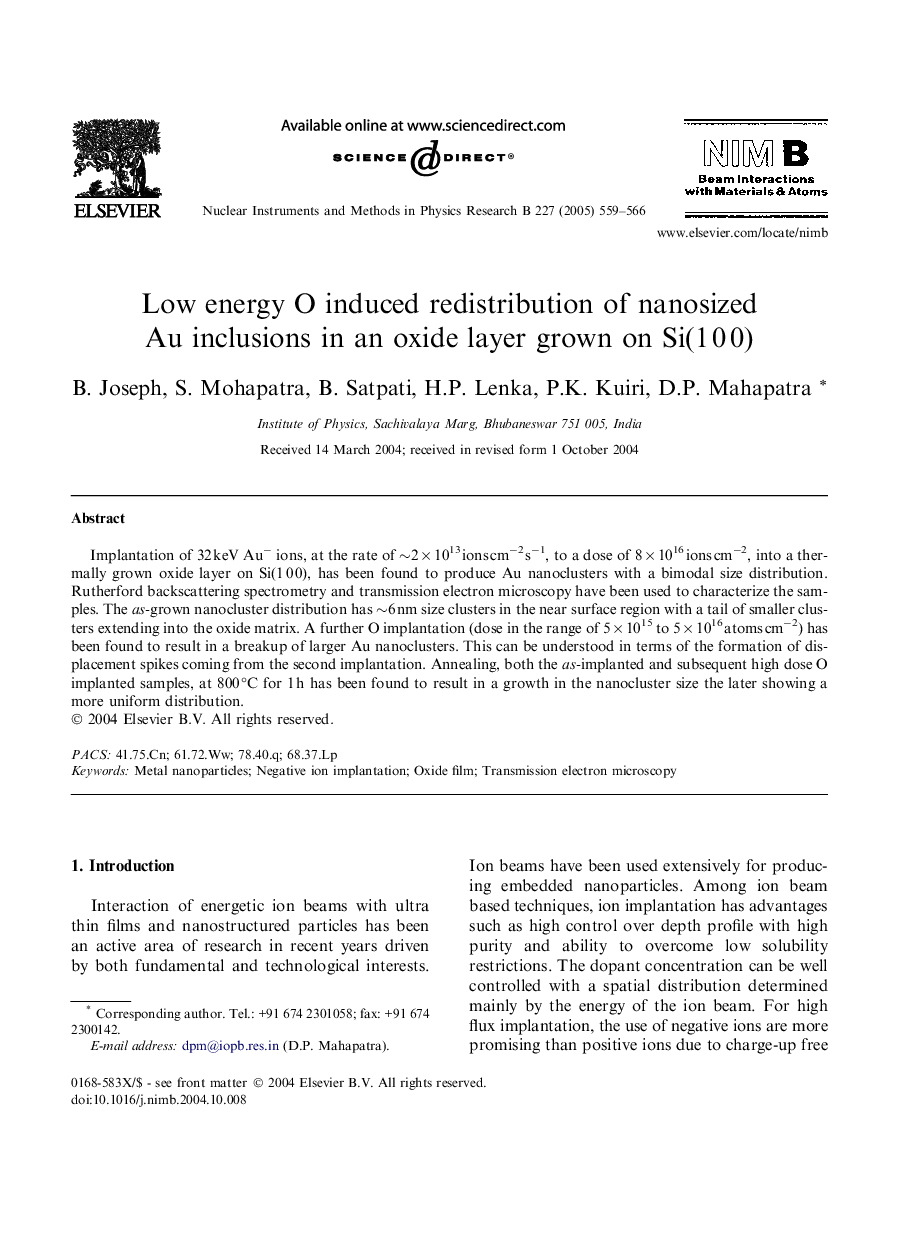| Article ID | Journal | Published Year | Pages | File Type |
|---|---|---|---|---|
| 10675438 | Nuclear Instruments and Methods in Physics Research Section B: Beam Interactions with Materials and Atoms | 2005 | 8 Pages |
Abstract
Implantation of 32 keV Auâ ions, at the rate of â¼2 Ã 1013 ions cmâ2 sâ1, to a dose of 8 Ã 1016 ions cmâ2, into a thermally grown oxide layer on Si(1 0 0), has been found to produce Au nanoclusters with a bimodal size distribution. Rutherford backscattering spectrometry and transmission electron microscopy have been used to characterize the samples. The as-grown nanocluster distribution has â¼6 nm size clusters in the near surface region with a tail of smaller clusters extending into the oxide matrix. A further O implantation (dose in the range of 5 Ã 1015 to 5 Ã 1016 atoms cmâ2) has been found to result in a breakup of larger Au nanoclusters. This can be understood in terms of the formation of displacement spikes coming from the second implantation. Annealing, both the as-implanted and subsequent high dose O implanted samples, at 800 °C for 1 h has been found to result in a growth in the nanocluster size the later showing a more uniform distribution.
Keywords
Related Topics
Physical Sciences and Engineering
Materials Science
Surfaces, Coatings and Films
Authors
B. Joseph, S. Mohapatra, B. Satpati, H.P. Lenka, P.K. Kuiri, D.P. Mahapatra,
